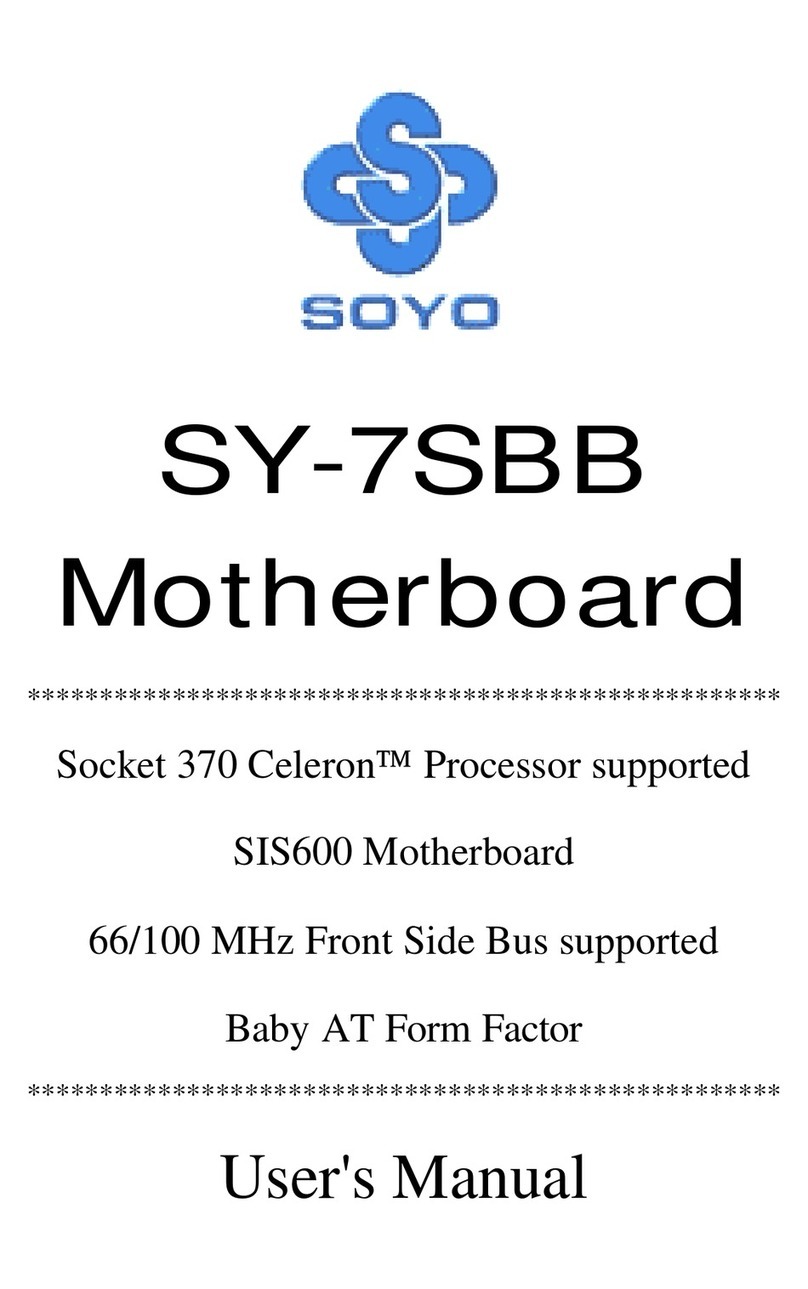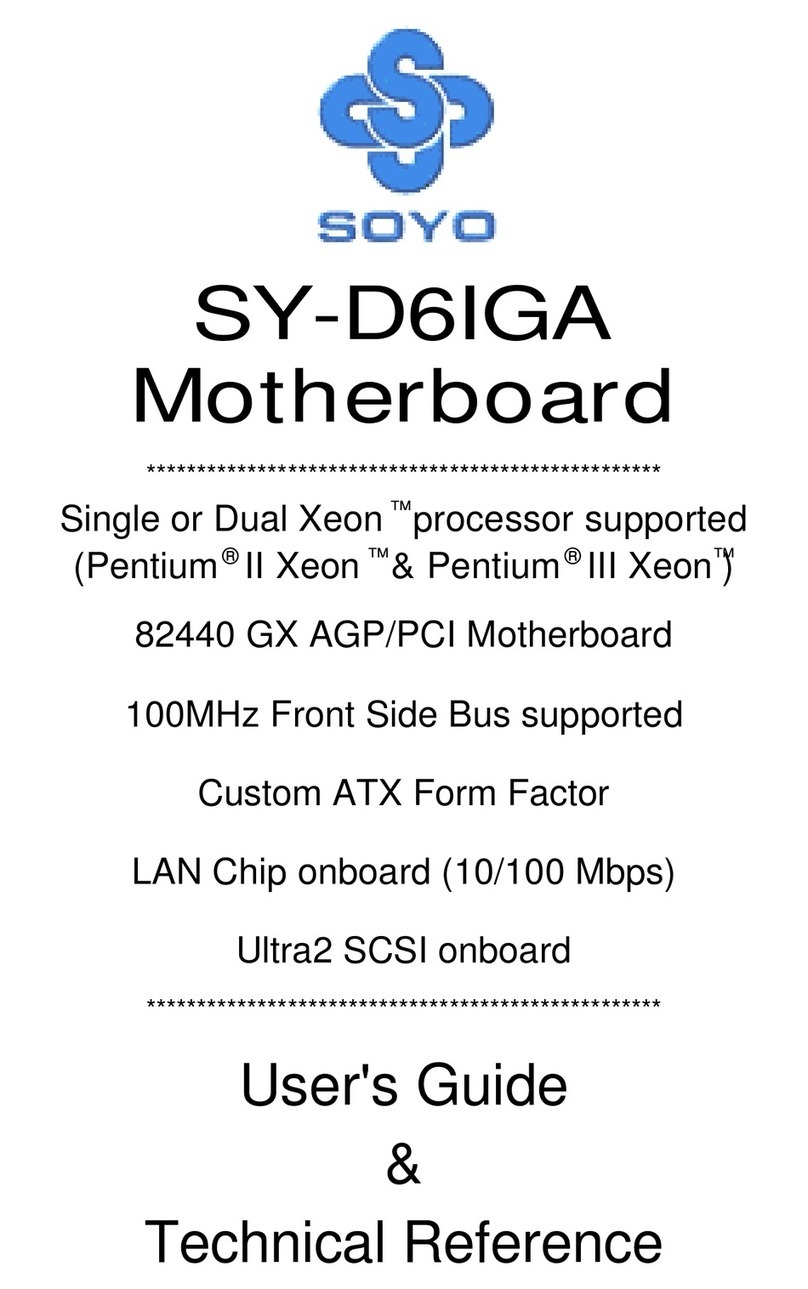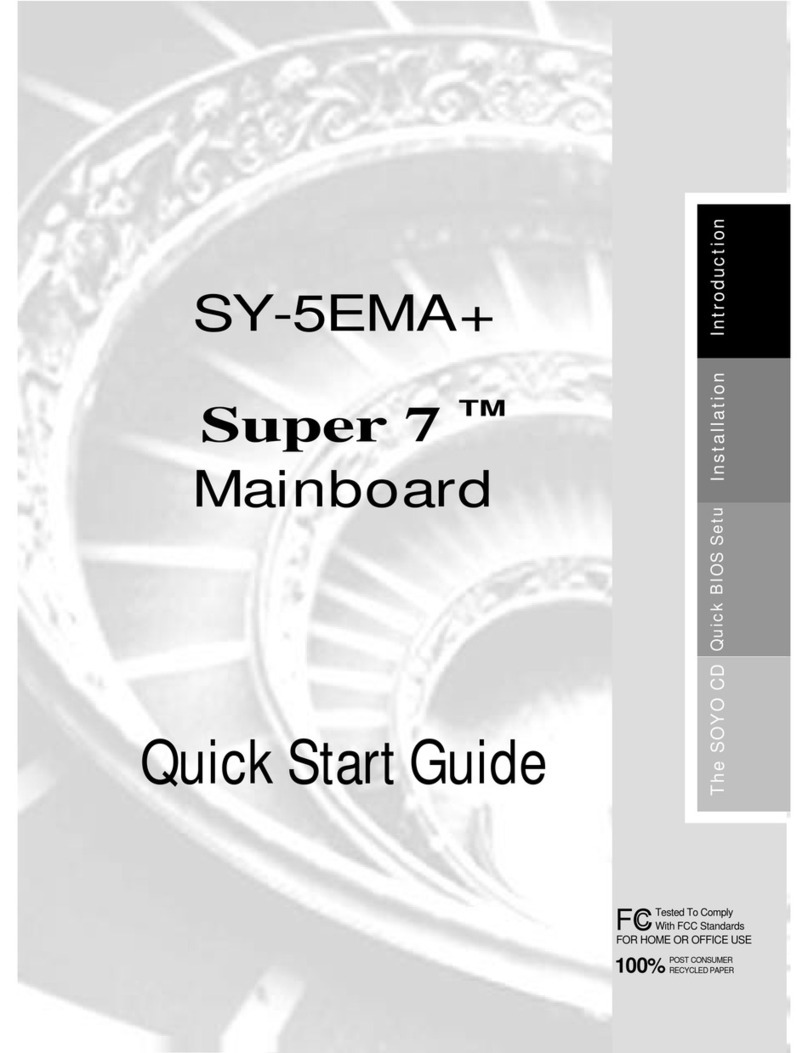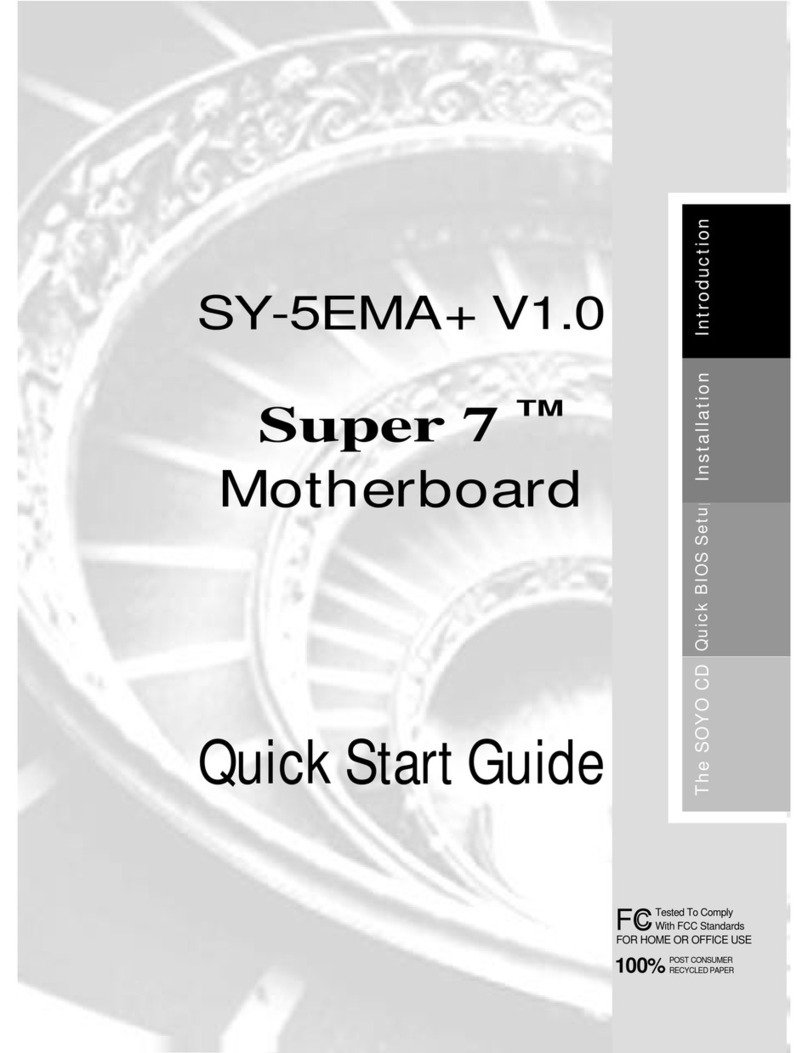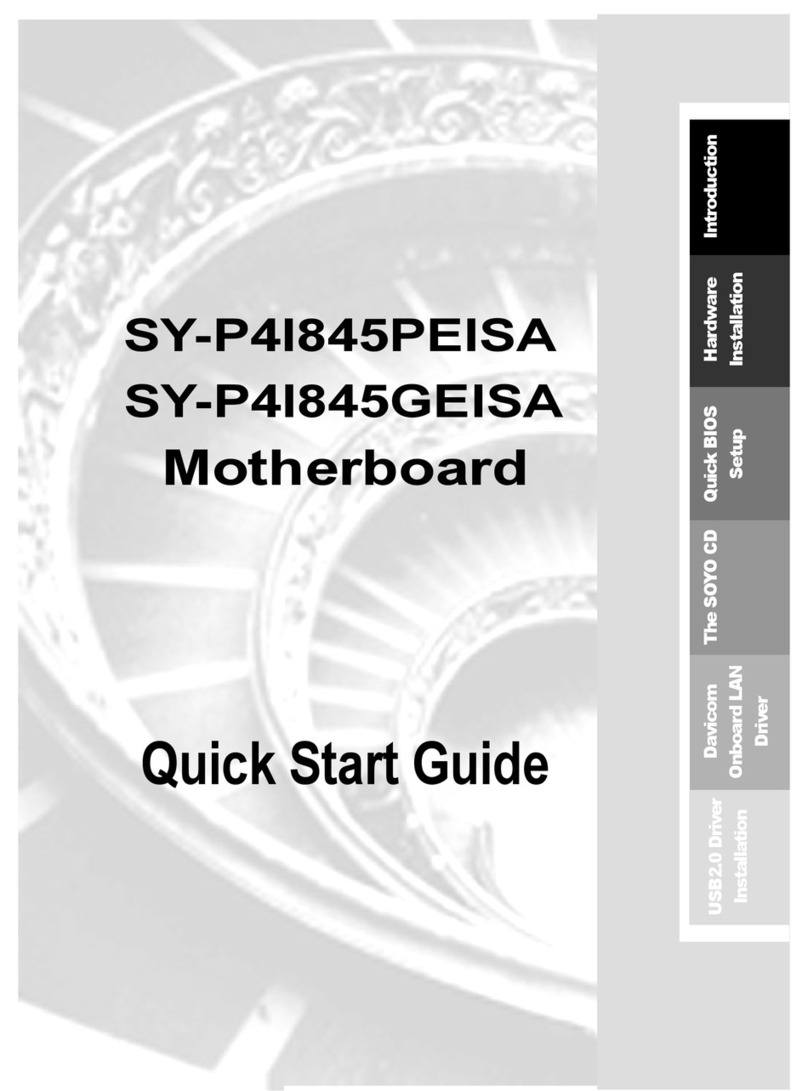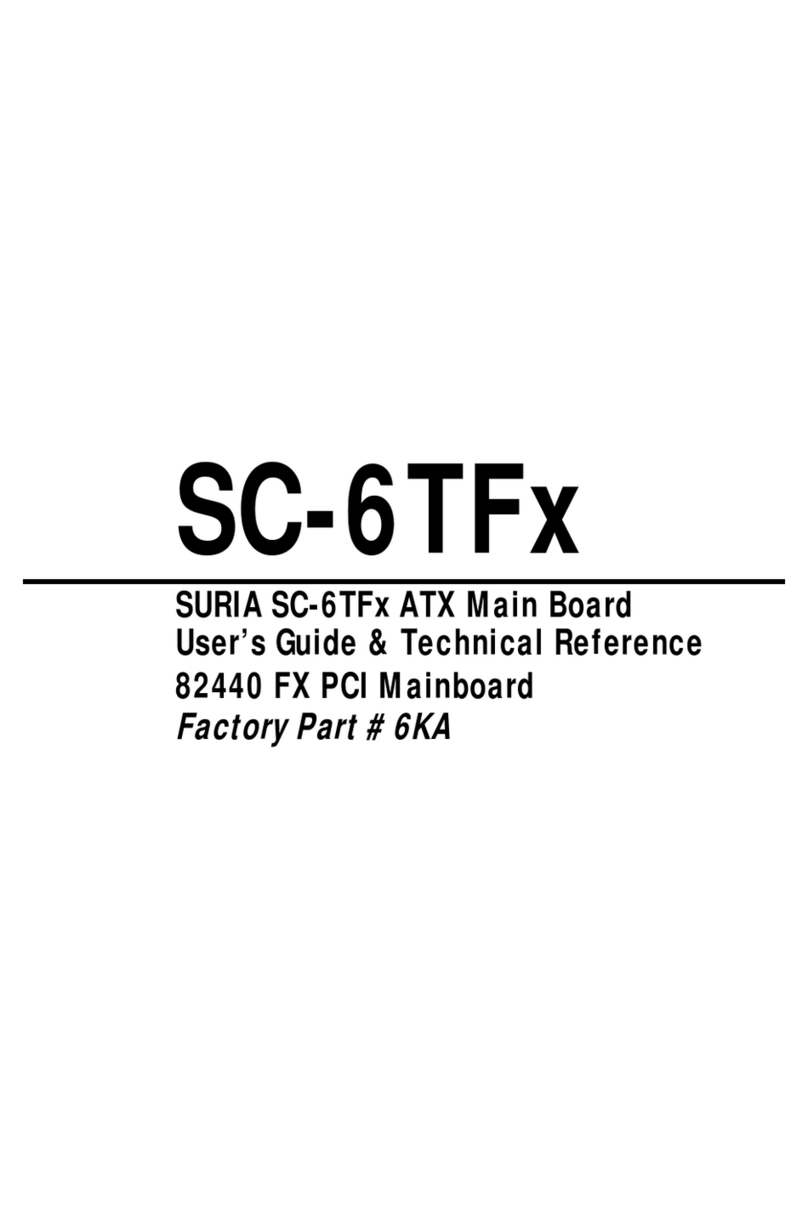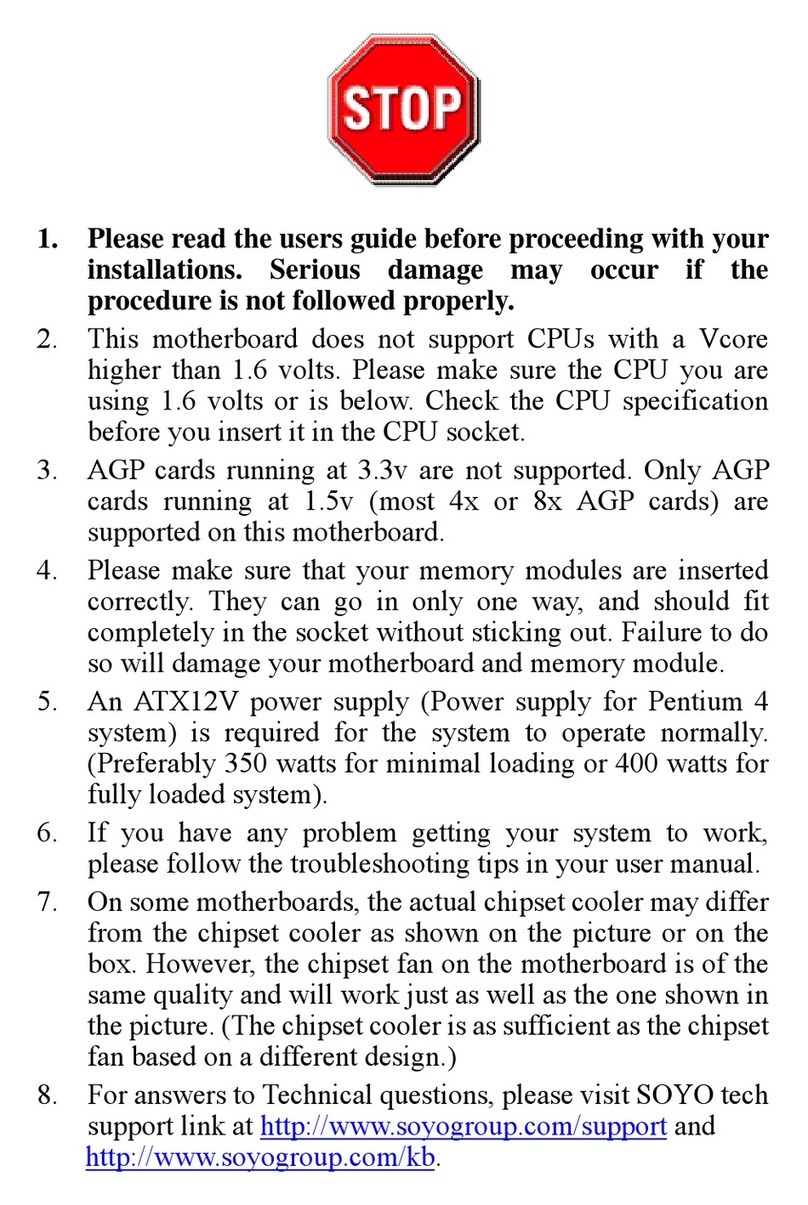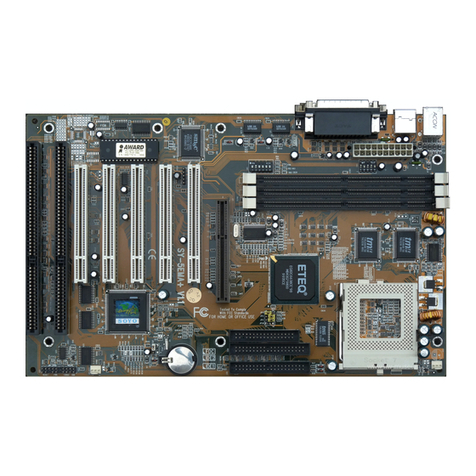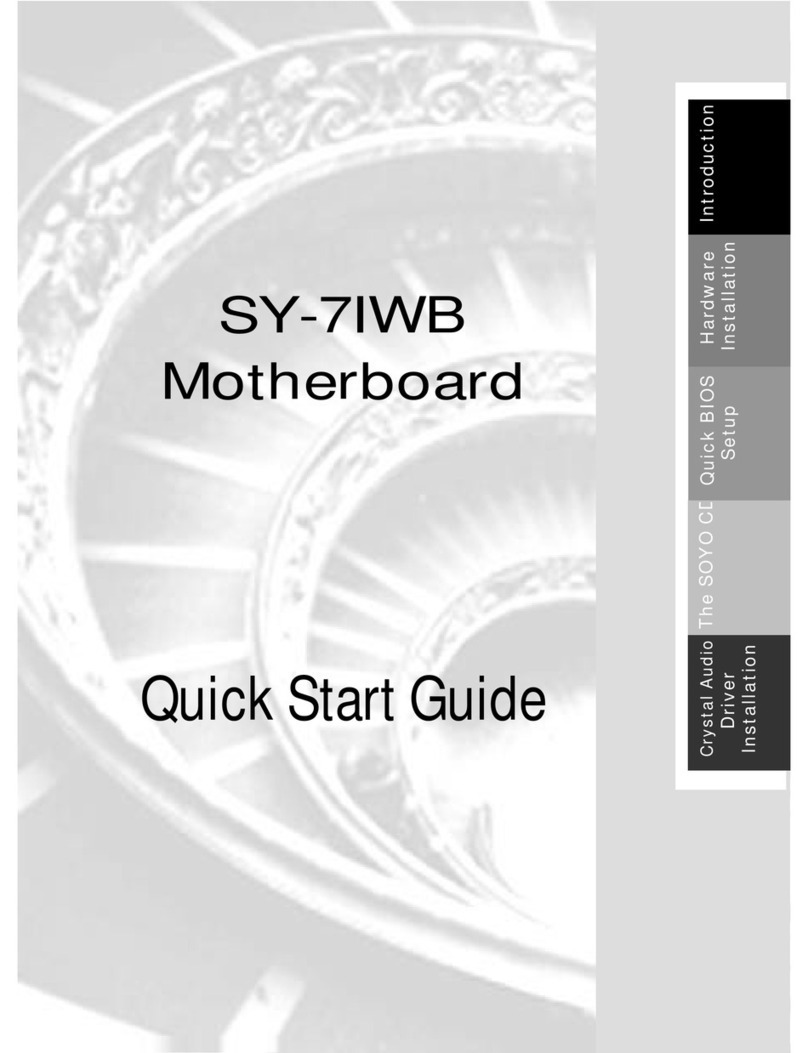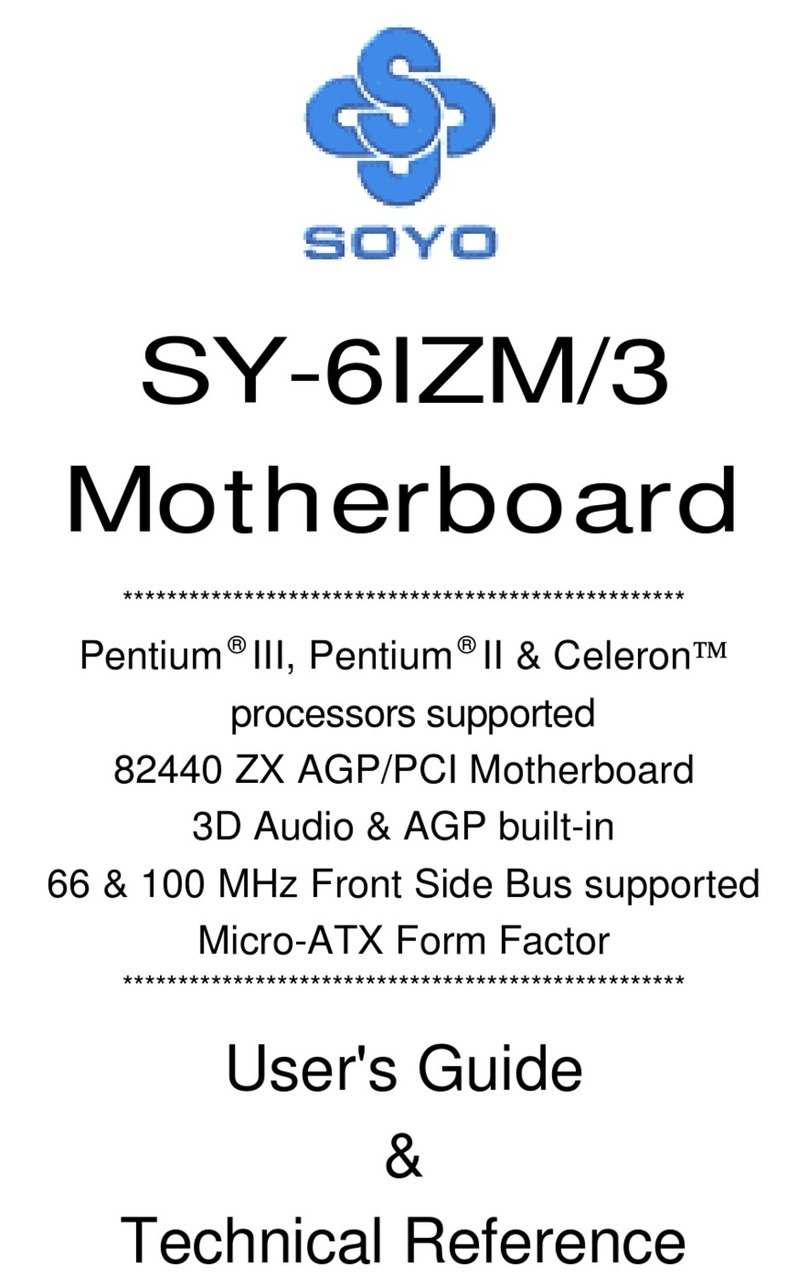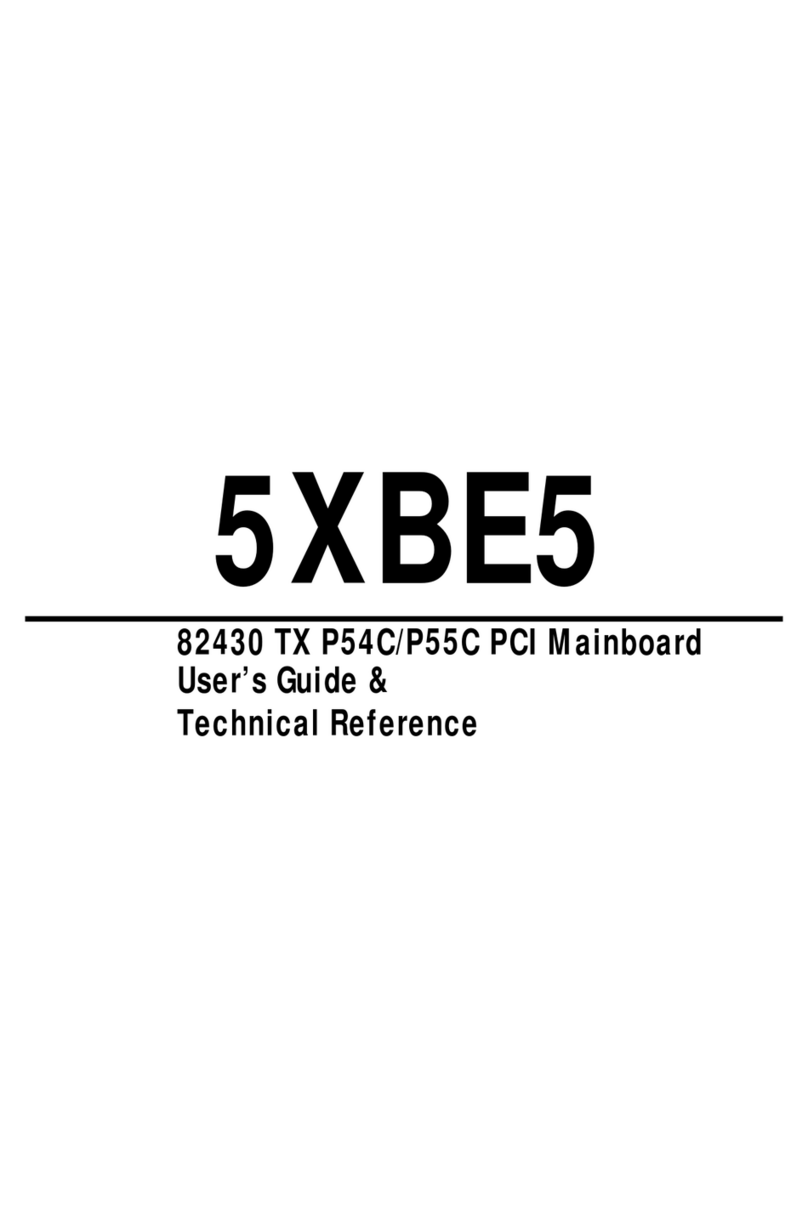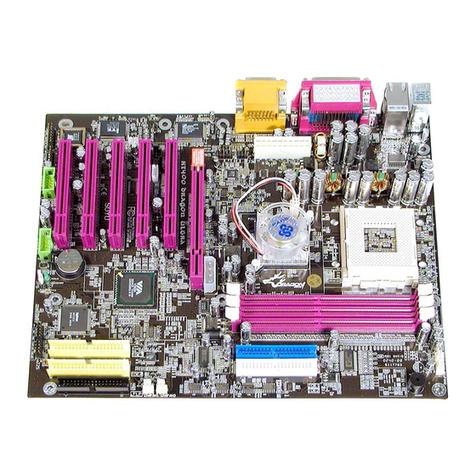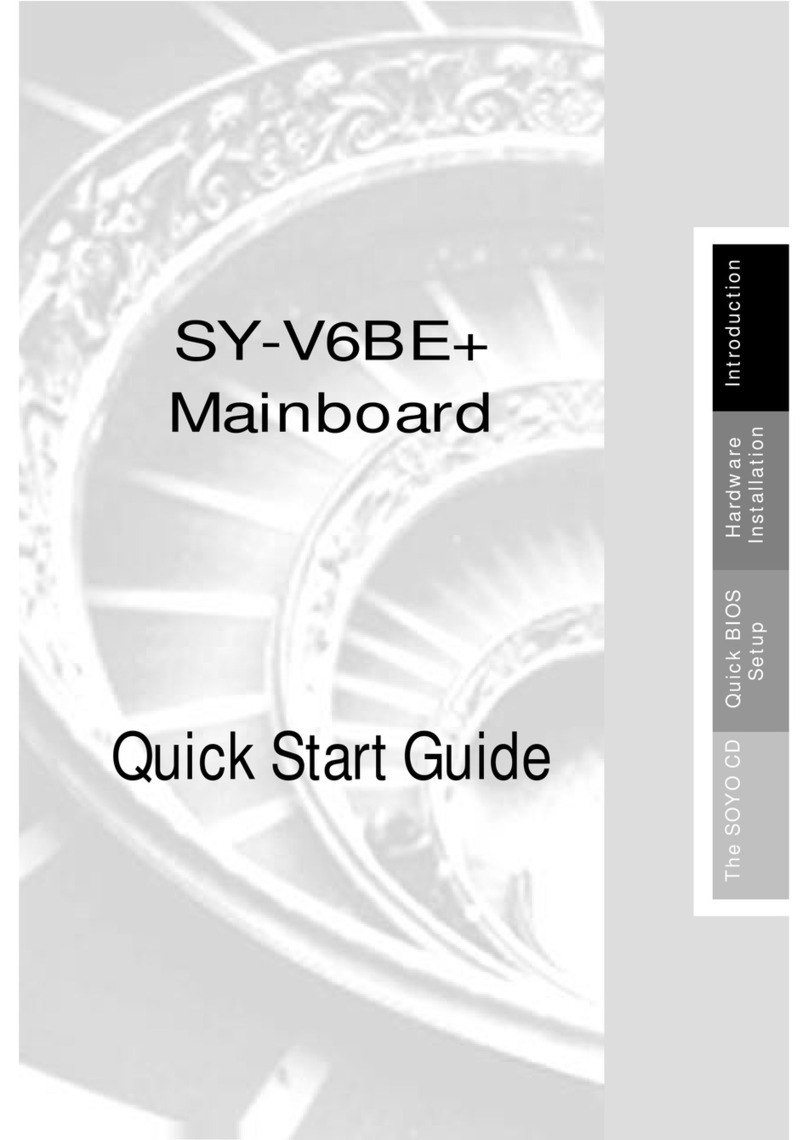Table of Contents
Chapter 1: Introduction .....................................................1
Key Features .................................................................................1
Unpacking the Mainboard.............................................................2
Electrostatic Discharge Precautions..............................................2
Mainboard Layout w/ Default Settings .........................................3
Chapter 2: Hardware Setup ..............................................5
Jumpers .........................................................................................5
JP5: CMOS Clear Jumper .......................................................5
JP40: CE Test Jumper Pin ......................................................5
JP2: Smart Detect CPU Voltage Function Auto/Manual
Jumper .....................................................................................6
JP37: DIMM Voltage Select Jumper .....................................6
CPU Type Configuration ..............................................................7
Step 1: Frequency Setting.......................................................7
P54C/P55C Ð 75/90/100 CPU Settings (1.5 x clock) .........7
P54C/P55C Ð 100/120/133 CPU Settings (2.0 x clock) .....8
P54C/P55CÐ 150/166 CPU Settings (2.5 x clock) .............9
P54C/P55C Ð 180/200 CPU Settings (3.0 x clock) ..........10
P54C/P55C Ð 233 CPU Settings (3.5 x clock) .................11
AMD K6 Ð PR266 CPU Setting (4.0 x clock)..................12
AMD K6 Ð PR300 CPU Setting (4.5 x Clock) .................12
Step 2: CPU Single/Dual Voltage Setting............................14
Single Voltage CPU Setting .............................................14
Dual Voltage CPU Setting................................................15
Memory Configuration ...............................................................15
Memory Configuration Table................................................16
RAM Bank Installation Notice..............................................16
Cache Configuration ...................................................................16
Cache Size and RAM Locations ...........................................16
Multi I/O Port Addresses ............................................................17
Connectors ..................................................................................17
PW2 Ñ ATX Power Supply On/Off Switch Connector
(Momentary Type).................................................................17
COM1, COM2 Ñ COM1/COM2 Connectors ......................17
JP43: CPU Cooling Fan Connector......................................18
FDC Ñ FDC Connector........................................................18
ATX PW Ñ ATX Power Supply Connectors .......................18
RESET Ð Hardware Reset Control ........................................19
HDD LED Ð HDD LED Connector.......................................19

